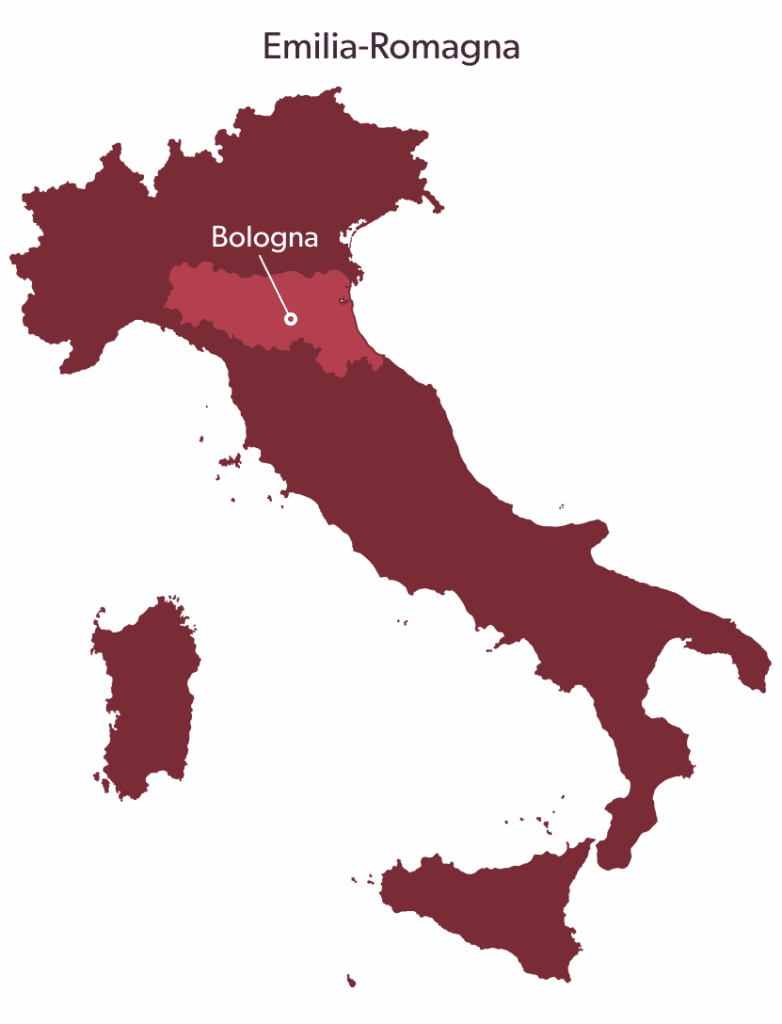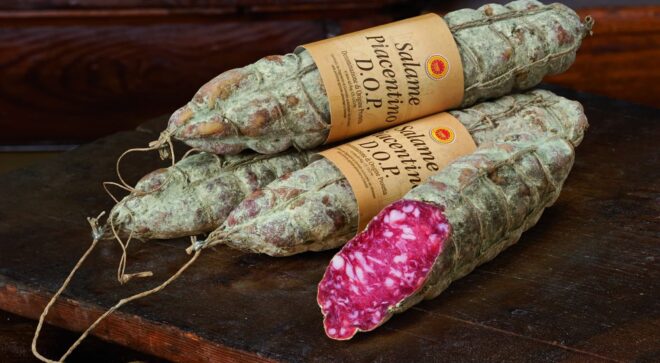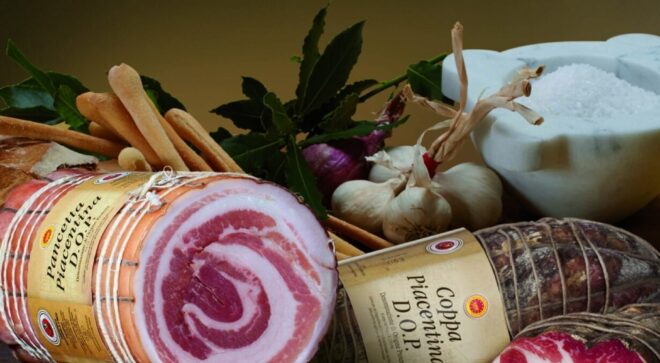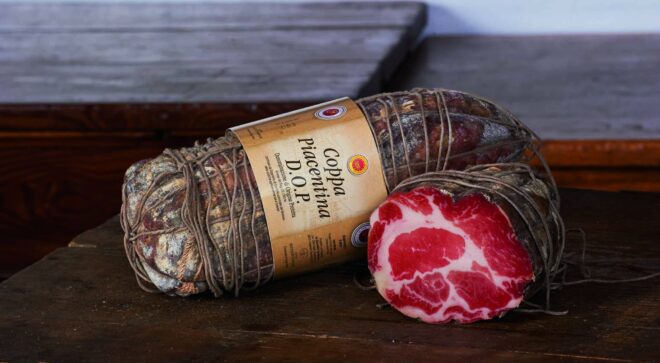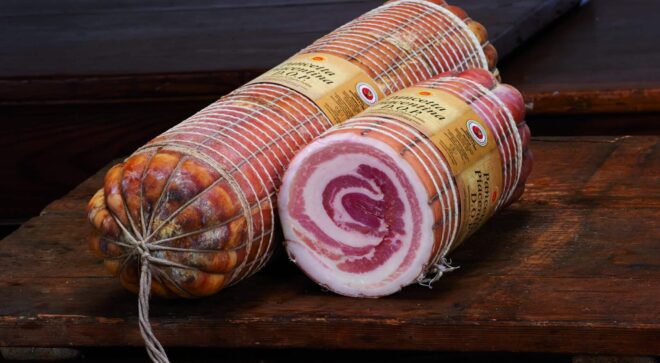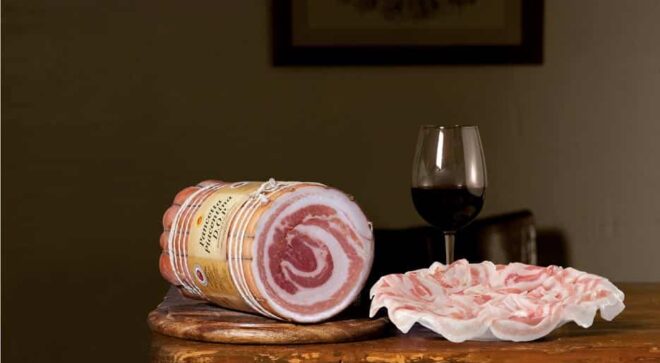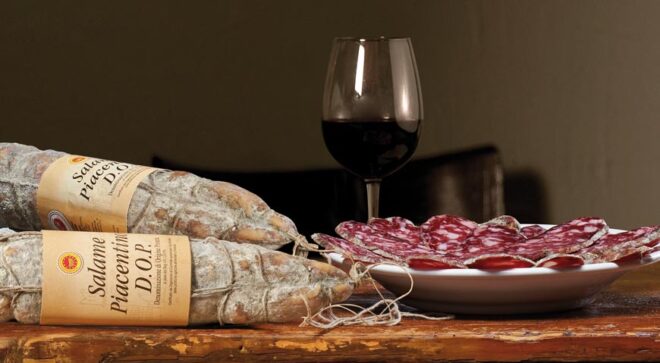The populations of the prehistoric era that occupied the geographical area of the province of Piacenza have always raised pigs; numerous finds from the pile-dwelling era attest that this mammal has always been an important source for the nutrition of the populations who learned to work and preserve this type of meat using salt as a preservative (an abundant element in the area for the rock salt wells present in the areas surrounding Salsomaggiore ). There are also citations of how Hannibal, in 2018 BC. celebrated the victory over the Roman army on the Trebbia river by feasting on salted pork provided by the inhabitants of the Piacenza hills.
Roman civilization, which largely used pork for food, left as evidence of the presence of pigs in the Piacenza area, a bronze pendant-amulet depicting a small pig, currently preserved in the Civic Museum of Piacenza.
In the Middle Ages the brotherhood of Lardaroli was formed and the reputation of Piacenza cured meats was already so widespread that the Milanese merchants defined with the term “Roba de Piaseinza” the cured meats that came from Piacenza indicating with that term, which could already be a logo, the undisputed quality of products. In two 12th century churches, San Savino in Piacenza and San Colombano in Bobbio, we have a formidable testimony of the deep-rooted craft of the butcher through two beautiful mosaics.
To underline a document drawn up by Friar Piacentino Falconi who already at the end of the “500” described in a meticulous and scientific way the rules for obtaining high quality cured meats, as if to say the precursor of the current production regulations.
It was in the first decades of the 1700s that the fame of these cured meats also reached the courts of France and Spain, thanks to a skilled diplomat from Piacenza, Cardinal Giulio Alberoni; among other testimonies there are numerous correspondence exchanges between Alberoni and the new sovereign of Spain, Elisabetta Farnese, in these letters, the queen used to ask Alberoni for supplies of Salumi Piacentini, of which she was particularly fond. The prelate also used Piacenza cured meats as gifts when he went to various European courts for diplomatic meetings and in this regard he asserted “they are bagatelle that cost little but do a great deal of good”.
We believe that this historicity is an added value to the intrinsic high quality of the product and that it must be told and disclosed. This particular vocation of the area is also evidenced by the fact that in 1996, among the first European PDO certifications, the three excellent Salumi Piacentini (Coppa Piacentina, Salame Piacentino, Pancetta Piacentina) are recognized.
Piacenza is the only province to have three DOP charcuteries in Europe, the labeling of which took place on July 2, 1996, among the first in the country.

